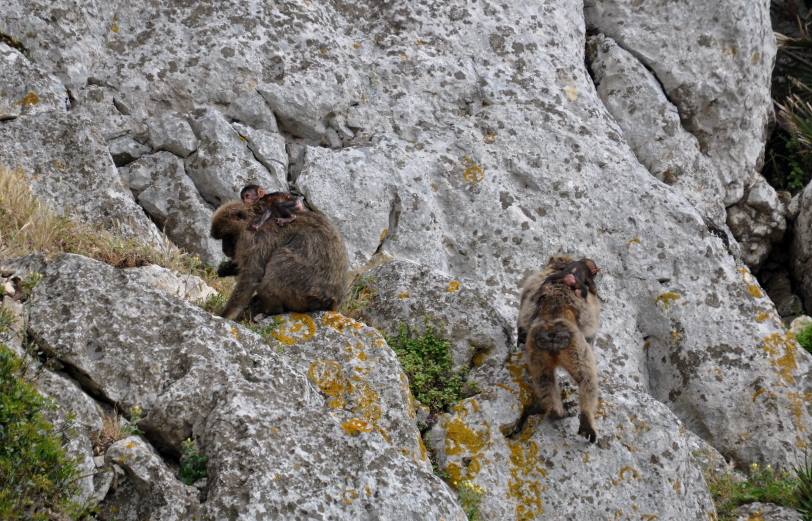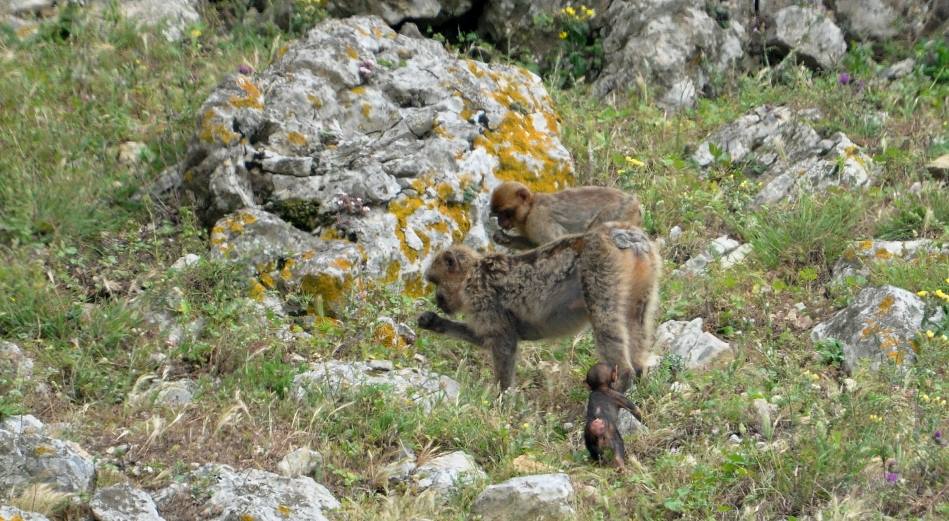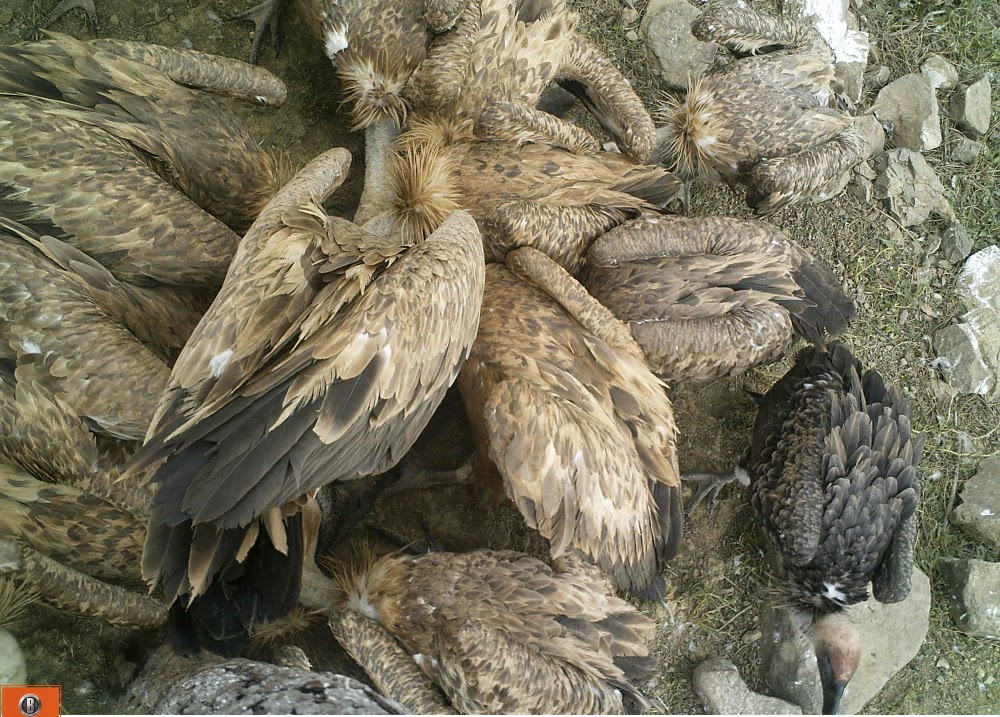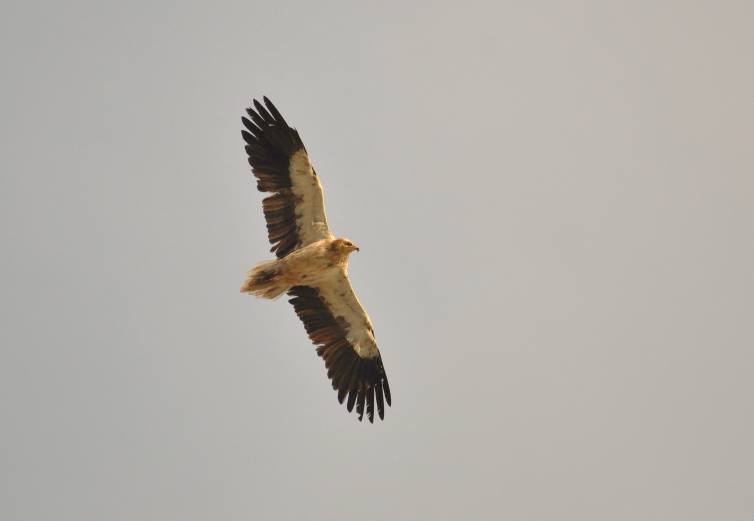Jbel Moussa is known as a good point for observing bird migration crossing the Strait of Gibraltar between Africa and Europe. But it’s also known for its colony of the endangered Barbary macaque (Macaca sylvanus). The macaques inhabit the inaccessible parts of Jbel Moussa, but can easily be observed from the western and southern sides of the mountain. If there are raptors around, especially the Golden Eagle (Aquila chrysaetos), we can hear the macaques alarming so the group can hide before one of the babies is taken by the eagle.
Unlike the Barbary macaques that can be seen near some touristic places in the Middle Atlas where they get close to people and ask for food, watching the macaques at Jbel Moussa in their natural setting is a real treat (Note: the behavior of some macaque groups in the Middle Atlas was started by people in the first place who are feeding a wild, endangered and protected species).
The photos captured yesterday, 29 May 2015, by Rachid El Khamlichi show the macaques with their newborn babies actively feeding on wild plants.
For the vultures, see below the macaques’ photos. Enjoy!





Migratory vultures at Jbel Moussa
About 3 weeks ago, we shared with you photos taken by camera trap showing the pristine spring where the vultures are drinking and bathing. Today we will share with you some places where they feed and rest/roost at Jbel Moussa.
Feeding places:
On 23 May 2015, there were at least some 200 Griffon Vultures (Gyps fulvus) and one Rüppell’s Vulture (Gyps rueppelli). The vultures were first seen kettling around and then started heading to a place where we knew there is a carcass of a wild boar (Sus scrofa). A local villager informed us earlier about this carcass and we set up a camera trap in anticipation of the vultures. We were not disappointed. See the following three photos. (Read: Vulture restaurant experiment at Jbel Moussa).



Resting/roosting places:
As we have seen, Jbel Moussa is the site where the vultures can feed and drink during the northward migration period. The mountain is also used by the vultures for resting (during the day) and roosting during the night. Jbel Moussa is very important especially when there is bad weather conditions on the Strait of Gibraltar forcing the vultures to stay for longer. Here are some diurnal resting places for vultures. (Much better photo of vultures’ roost at Jbel Moussa).


